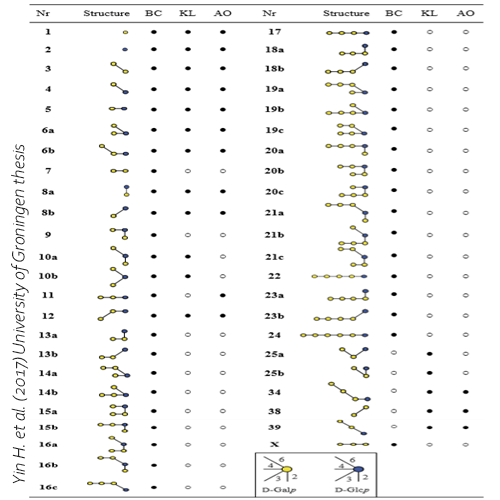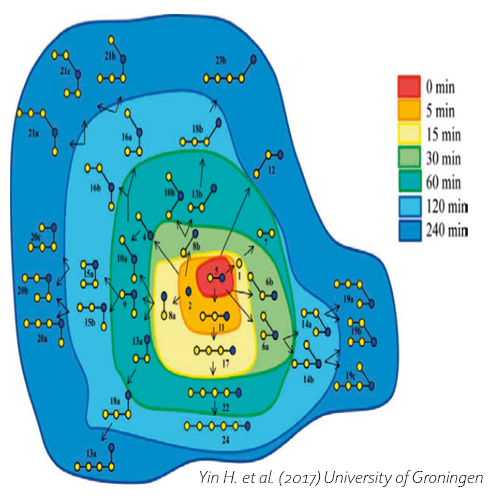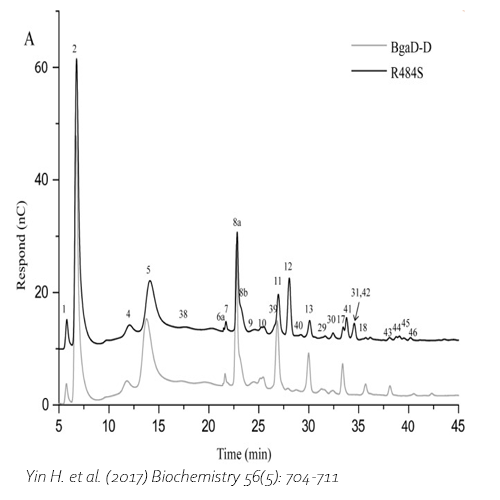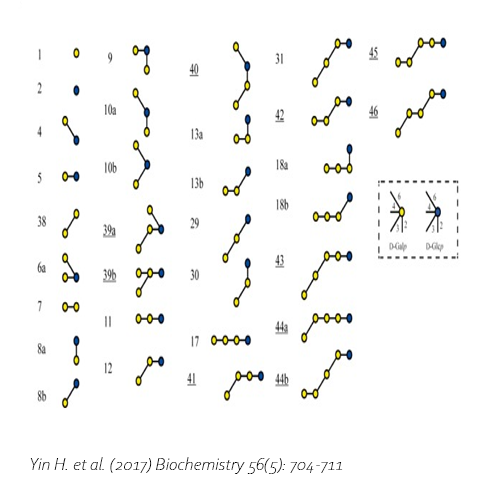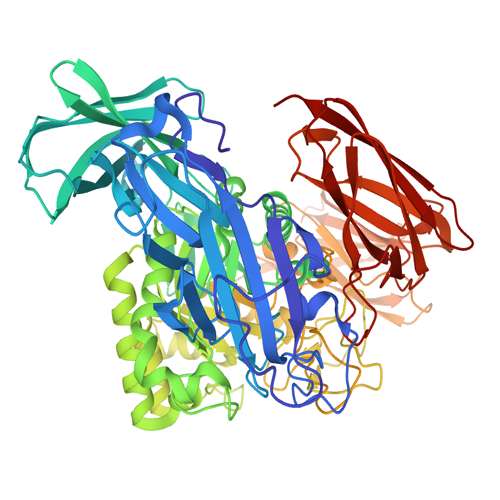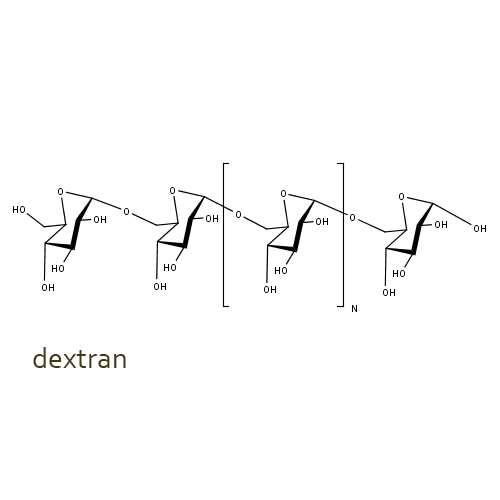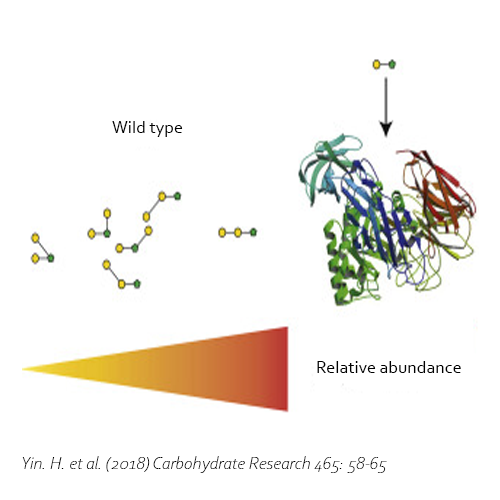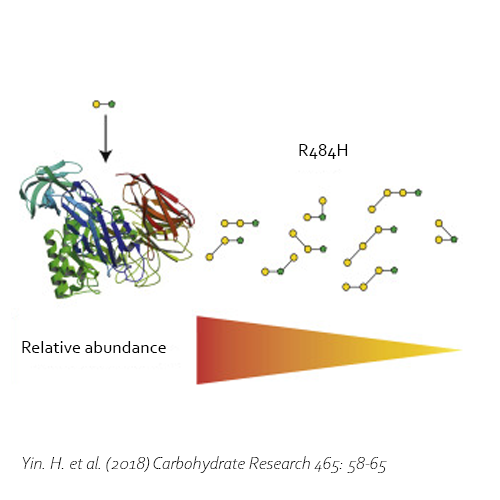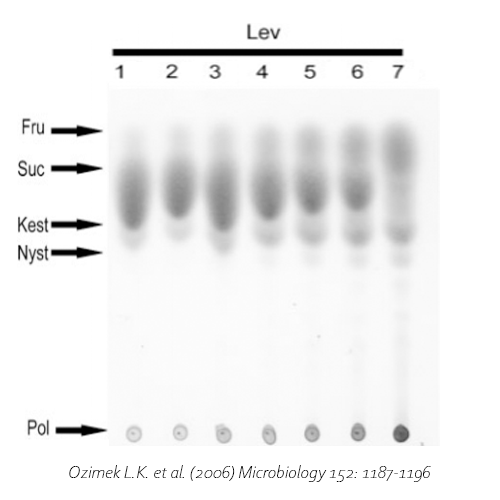Oligos (GOS) from lactose, synthesized by BgaD-D of B. circulans ATCC 31382
Request quote for price
Beschrijving
Galacto-oligosaccharides (GOS) are widely used as a biocatalyst in the food industry. GOS mixtures mimic the prebiotic effects of the human milk oligosaccharides, by stimulating the number of bifidobacteria and their metabolic activity in the gut, and therefore are added to infant formula.
Compared with commercial available β-galactosidase enzymes, the BgaD-D enzyme of Bacillus circulans ATCC 31382 generates a high yield of GOS showing a complex formation pattern. The GOS product synthesized by the wild type BgaD-D presents a carbohydrate mixture showing a majority of β(1→4) linked galactose on the reducing glucose residue, and a trace amount of β(1→2), β(1→3), β(1→6) linkages. A total of 15 compounds have been identified in the wild type GOS compounds. The products contain both linear and branched structures. Some structures have been further elongated with β(1→4)-linked galactose residues.
Human newborns are capable to produce β-galactosidase enzymes to digest lactose. Nevertheless, the majority of adults have lost the ability to produce these enzymes. This can end up in lactose intolerance, making them incapable to digest dairy products. The lactose could be removed from the milk to solve this problem, and the residual product could be converted to high valuable lactose derivates like GOS.
Yin, H., 2017. Biochemical characterization of β-galactosidases and engineering of their product specificity, University of Groningen.
Yin, H. et al., 2017. Engineering of the Bacillus circulans β-galactosidase product specificity. Biochemistry, 7 2, 56(5), pp. 704-711. DOI 10.1021/acs.biochem.7b00032
Extra informatie
| Volume | 100 mg |
|---|

